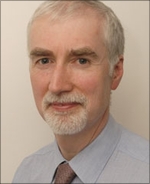In 2009 the NIAA Research Council undertook a Research Priority Setting Exercise to identify topics where anaesthetists and patients felt research would inform clinical management and offer benefit to patients.
Formal research priority setting has been adopted by a number of medical specialties as a way of bringing important research questions to the attention of the major medical funding bodies and attracting substantial funding to support research into these questions. Examples include priority setting exercises undertaken by the Intensive Care Society and the UK Respiratory Research Collaborative.
The NIAA Priority Setting Exercise was supported with funding and resources from the Royal College of Anaesthetists, the Association of Anaesthetists of Great Britain and Ireland, the British Journal of Anaesthesia and the Leeds Teaching Hospitals Trust. It was led by Dr Simon Howell and Dr Jaideep Pandit and modelled on the priority setting exercises undertaken by the Intensive Care Society. Dr Duncan Young, who led the first ICS exercise, gave generously of his time and advice.
- Stage One: Letters were sent to all Fellows of the RCoA and members of the AAGBI, inviting them to identify important research questions in anaesthesia and perioperative medicine that would benefit from being addressed by clinical research studies. This generated over four hundred suggestions.
- Stage Two: The suggestions were then sorted into broad research themes and a second questionnaire was sent inviting anaesthetists to rank them in order of importance. More than two thousand anaesthetists submitted responses to this second questionnaire.
- Results: In June 2009 an expert panel made up of research active anaesthetists and representatives from the RCoA's Patient Liaison Group considered almost 2000 responses and a short-list of questions can be viewed here:
 Priority Setting Exercise Shortlist Questions.pdf (54 KB)
Priority Setting Exercise Shortlist Questions.pdf (54 KB)
- Five priority questions were selected and converted into EPICOT statements (Evidence, Population, Intervention, Comparison, Outcome, Time Stamp).
- Of these five statements, two were selected and submitted to the NIHR Health Technology Assessment Programme for consideration as commissioned research.
Click here to read a full description of the project and its outcomes published in the BJA.
Dr Simon James Howell
MA(Cantab) MRCP FRCA MSc MD








